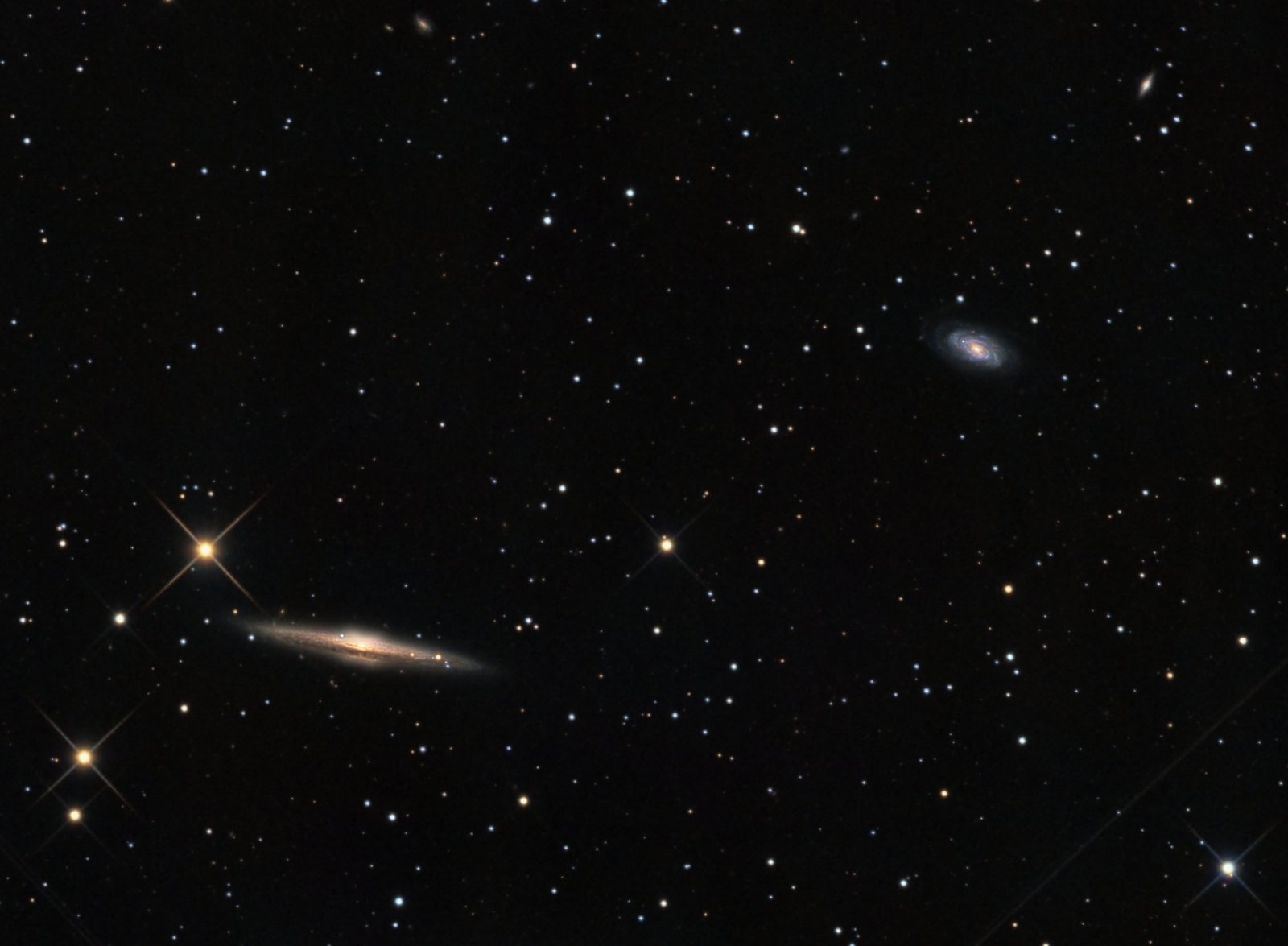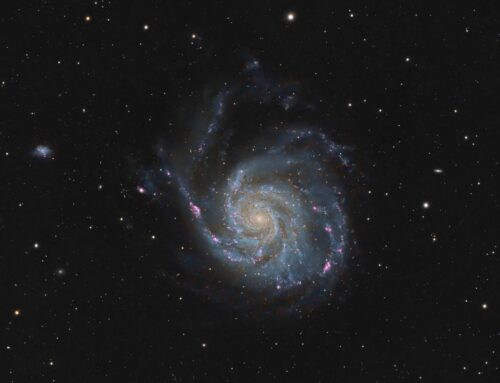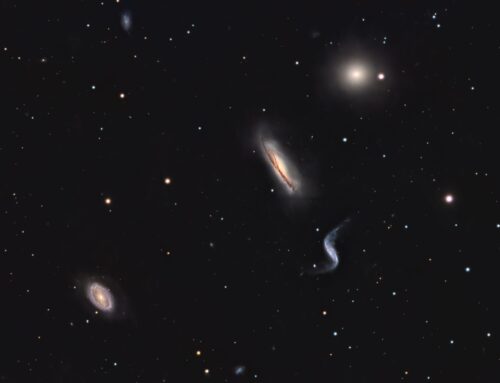NGC5740 and NGC5746

Click image for full size version
June 15, 2016
In extreme eastern Virgo lie the two main subjects in this image, NGC5746 (lower left) and NGC5740 (upper right). The two form an interacting galaxy pair within the Virgo cluster and lie about 95 million light years away.
One of the most interesting thing about this pair is how different they appear. NGC5746 is quite yellowish, and dominated by the central bulge and dust lane that reminds me a lot of NGC891 and NGC4565. NGC5740 shows blue spiral arms with pink nebulae and a yellowish core.
Many other Virgo cluster galaxies are captured in this field, with the most prominent being NGC5738 (top right corner). How many can you spot?
By the way – the diagonal lines at lower left and right are the diffraction spikes from a star so bright that it is easily visible to the naked eye from even a moderately light polluted site. I cropped it out of the picture to avoid distracting attention from the main subjects of the picture.
Tekkies:
SBIG STL-11000M camera, Baader LRGB filters, 10″ f/6.8 ASA astrograph, Paramount MX. Guided with QHY5 on an 80 mm f/6 refractor. FocusMax for focusing. CCD Commander to automate the sessions. Acquistion and guiding with TheSkyX. All pre-processing and processing in PixInsight. Shot from my SkyShed in Guelph, Ontario. RGB under moderate moonlight and luminance with no moon. Average to very good transparency and good seeing.
8x15m R, G and B, and 29x15m L unbinned frames (total=13hr15m).
RGB
Creation and cleanup: R, G and B masters were prepared with ImageIntegration. The R, G and B masters were combined with ChannelCombination, and the resulting RGB image was cropped and processed with DBE, followed by BackgroundNeutralization and ColorCalibration.
Linear Noise Reduction: MultiscaleLinearTransform was used to reduce noise in the background areas of the RGB image. Layer settings for threshold and strength: Layer 1: 3.0, 0.5 Layer 2: 2.0, 0.39 Layer 3: 1.0, 0.25 Layer 4: 0.5, 0.1. A mask was used to protect high signal areas.
Stretching: HistogramTransformation was applied to make a pleasing yet bright RGB image.
Luminance
Creation and cleanup: An L master was created using ImageIntegration and DrizzleIntegration. The image was cropped similarly to the RGB master and DBE was applied to remove gradients.
Deconvolution: A copy of L was stretched to use as a deconvolution mask. A star mask was made from unstretched L to use as a local deringing support. Deconvolution was applied (80 iterations, regularized Richardson-Lucy, external PSF made using DynamicPSF tool with about 25 stars; local deringing at 70% and global dark deringing at 0.05).
Linear Noise Reduction: MultiscaleLinearTransform was applied to reduce the noise. Layer settings for threshold and strength: Layer 1: 3.0, 0.6 Layer 2: 2.0, 0.5 Layer 3: 1.0, 0.4 Layer 4: 0.5, 0.15
Stretching: HistogramTransformation was applied to make an image with similar brightness to the RGB image. TGVDenoise was applied using an inverted copy of L as a mask, and the image was re-stretched to reset the black point.
Combining SynthL with RGB:
The RGB image was aligned to the L master. LRGBCombine with default settings was used to apply L to the RGB master to make an LRGB image.
Final Processing
UnsharpMask was applied to the galaxies and mid-sized stars using a mask. MultiscaleLinearTransform was applied to sharpen the brightest portions of the galaxies further. Contrast, brightness and saturation were adjusted in several iterations with the Curves tool, with separate adjustments for background and stars using a mask.
Image scale is about 0.55 arcsec per pixel for this camera / telescope combination, since Drizzle processing was used on the luminance channel.






Leave A Comment